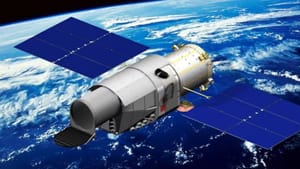
May 17, 2024
China delays launch of Xuntian space telescope to late 2026
Yesterday, the 16th of May, the South China Morning Post, referred to as SCMP from here, was able to verify with those close to the program that the launch of the Xuntian (巡天) space telescope has been delayed to late 2026. Unofficial reports about a delay were shared on the 14th of May after two presentation slides from the Chinese Space Station Telescope Science Conference, in Hangzhou, were leaked online.
This is the second delay Xuntian has faced in the last six months, after its launch was delayed from late-2023 to mid-2025 in November of 2023.
Based on the leaked presentation slides, several major components of the space telescope have been completed and are undergoing pre-launch testing. According to the slides, the timeline from now until the launch is as follows:
- By December 30th 2024, comprehensive thermal testing of major components will be completed.
- By January 30th 2025, general inspections of major components will be completed.
- By late February 2025, the Xuntian space telescope will be joined together, between the instrument section and service module.
- By late May 2025, various integration tests will be completed on a fully assembled spacecraft.
- By early May 2026, pre-launch vibration tests will be completed.
- By late September 2026, the Xuntian space telescope will be shipped to the Wenchang Space Launch Site.
- By December 21st 2026, the Xuntian space telescope will be in 'launch status' ahead of a launch to low Earth orbit atop of a Long March 5B.
Xuntian will operate in low Earth orbit after launch in a co-orbit with the Tiangong Space Station to allow for occasional servicing by crews onboard. Its main instrument will feature a 2.5-billion-pixel camera to allow it to survey up to forty percent of the sky over its initial ten-year planned mission.
What is Xuntian?
The Xuntian (巡天) space telescope, or Survey the Heavens in English, is a 2-meter aperture space telescope planned to be operated by the China National Space Administration. The dry mass of the space telescope is believed to be 15,500 kilograms.
The primary mission for Xuntian will be high-resolution large-area multiband imaging, slitless spectroscopy surveys, and for precise cosmology. Xuntian has a total of five instruments onboard for its mission: a survey camera, a terahertz receiver, a multichannel imager, an integral field spectrograph, and a cool planet imaging coronagraph.

For servicing and repair, Xuntian will occasionally dock with the Tiangong Space Station so astronauts can maintain the telescope. NASA's Hubble space telescope has been serviced in the past due to it being in low Earth orbit, however each servicing required a new launch of crew and cargo.



